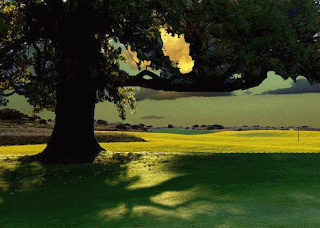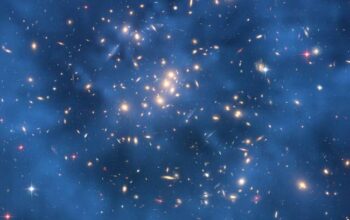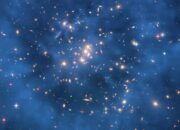Spiral galaxies represent some of the most elegantly structured forms of celestial bodies in the universe. Characterized by their mesmerizing spiral arms that extend gracefully from the center, they captivate both professional astronomers and amateur stargazers alike. One significant aspect under scrutiny is the formation and growth dynamics of these galaxies: the question of whether spiral galaxies grow from the inside out. This inquiry delves into observational evidence, theoretical frameworks, and the complex interplay of galactic components that contribute to their morphological evolution.
To address the question of inward versus outward growth, it is critical to first establish a foundational understanding of galaxy formation. Galaxies, including spiral types, are thought to originate from small density fluctuations in the primordial matter of the universe. Over billions of years, these fluctuations coalesced into larger structures through a process called hierarchical merging, where smaller clumps of matter combine to form more massive entities. This mechanism, however, does not solely dictate the radial growth of galaxies, especially when considering the observable characteristics of spiral galaxies.
Spiral galaxies typically possess a central bulge surrounded by a disk that features prominent spiral arms. The central bulge consists of older stellar populations, while the disk is rich in gas and younger stars. The distinct separation between these regions prompts an exploration of how matter is distributed and incorporated throughout the galaxy’s lifecycle. The notion that spiral galaxies may grow from the inside out can be traced to the temporal sequence of star formation and stellar evolution within their structures.
Observational studies reveal that star formation predominantly occurs in the spiral arms, which are areas of heightened density where gas and dust coalesce to form new stars. As these regions of star formation expand and evolve, they push the observable boundaries of the galaxy outward. However, this star formation process is heavily influenced by the gravitational dynamics of the galaxy itself. The spiral arms are not static features; instead, they are waves of density propagation that move through the galactic disk. Consequently, regions farther out may be star-forming as new material accumulates, suggesting a simultaneous growth pattern both inward and outward, rather than a strict linear expansion.
The role of dark matter cannot be understated in this context. It is widely accepted that dark matter constitutes a significant portion of a galaxy’s mass, forming a spherical halo that extends well beyond the visible components. This unseen mass affects the gravitational dynamics, providing a stabilizing influence that fosters the formation of structure within the galaxy. As mass accumulates at the center of a spiral galaxy, the central bulge grows, often resulting in a scenario where the inner regions experience an increase in stellar density prior to outward expansion of the spiral arms. Hence, while one might argue for an inside-out growth mechanism due to the bulge’s increasing prominence, the evidence for simultaneous outward expansion equally merits consideration.
Another contributing factor to the growth of spiral galaxies is the interaction with neighboring galaxies. Gravitational interactions can induce tidal forces, leading to alterations in gas dynamics that may trigger bursts of star formation. Such interactions often lead to phenomena such as spiral arm formation or enhancements in star formation that push growth beyond the mere aesthetic appeal of visible structures. If a neighboring galaxy encroaches upon another, the external gravitational influences can accelerate the growth of the spiral galaxy, affecting both the inner bulge and the outer arms.
The intricate relationship between star formation, gas dynamics, and dark matter distribution suggests a multi-faceted approach to understanding spiral galaxy growth. The radial gradient of metallicity within spiral galaxies provides additional insights. Observations demonstrate that the metallicity tends to increase toward the center of the galaxy. This phenomenon arises as older stars within the bulge enrich the interstellar medium via supernovae and stellar winds. The enriched material may fuel subsequent generations of star formation, facilitating a central growth pattern that extends outward.
While the model of spiral galaxy growth from the inside out is compelling, it is essential to integrate the evidence of external influences, star formation rates, gas accretion patterns, and dark matter’s role into a nuanced understanding of galaxy evolution. The dynamic processes influencing these massive structures ensure that the growth of spiral galaxies is neither linear nor simplistic, but rather a complex amalgamation of internal and external factors.
In contemplating the growth mechanisms of spiral galaxies, one cannot overlook the deeper philosophical implications embedded within astronomical inquiry. The allure of spiral galaxies transcends the boundaries of mere aesthetic appreciation. Their grand structures serve as a reminder of the universe’s capacity for order amid chaos, invoking questions about the nature of existence and the forces that shape the cosmos. The growth patterns of these galaxies reflect the ongoing narrative of cosmic evolution, inviting further exploration into the dynamic tapestry of the universe.
In conclusion, the question of whether spiral galaxies grow from the inside out is steeped in complexity rather than yielding a definitive answer. While there is substantial evidence to support an internal growth mechanism, external factors, gravitational dynamics, and interactions with surrounding material shape the galactic landscape. Such intricate growth patterns highlight the inherent beauty of the universe, encouraging a deeper appreciation for the intricacies that govern galaxy formation and evolution.










